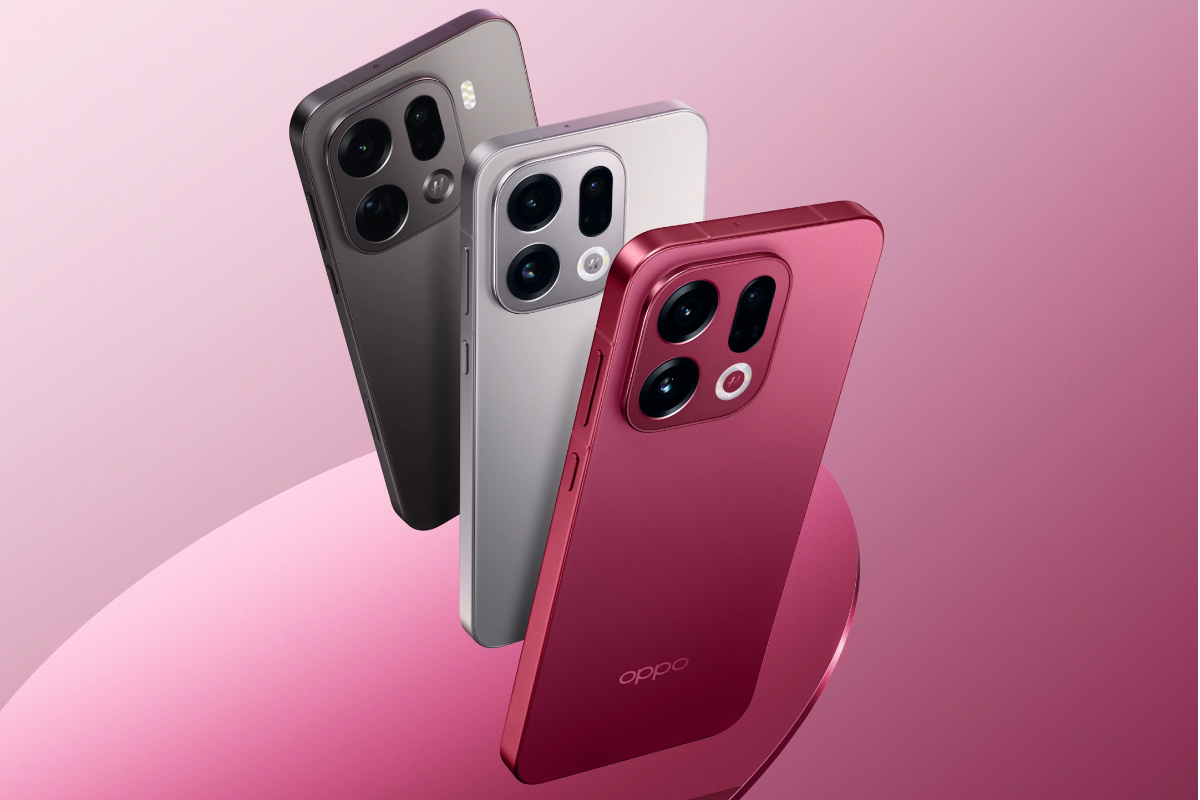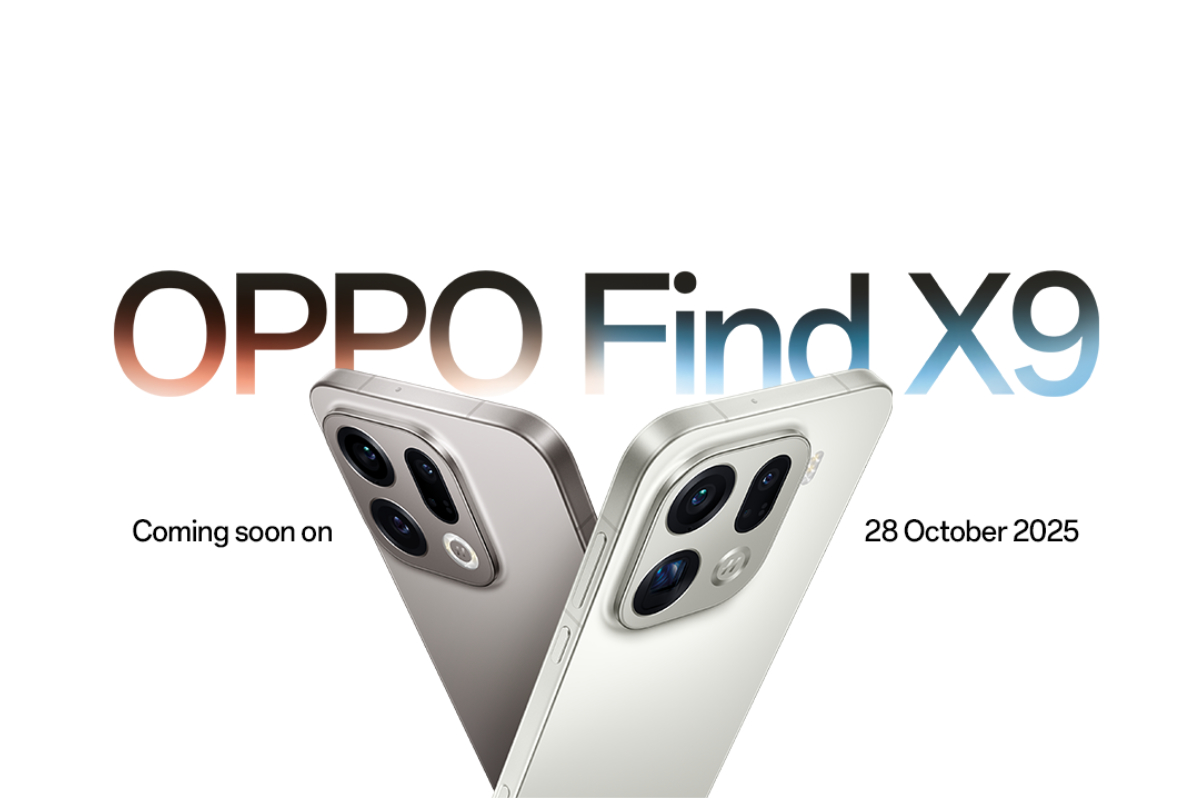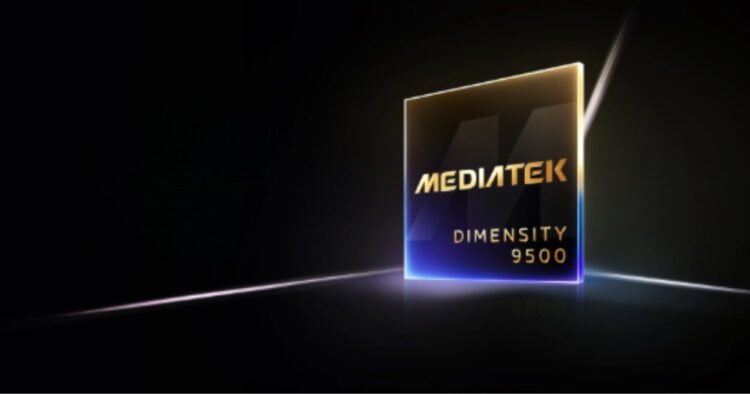The Silicon Shift That Changes Everything
Dimensity 9500 isn’t just MediaTek’s next flagship—it’s a declaration of dominance. Built on TSMC’s 3nm node and armed with an All Big Core CPU, this chip doesn’t whisper performance—it roars it. With the C1-Ultra core clocking 4.21GHz, paired with Mali-G1 Ultra MP12 GPU and a 100 TOPS NPU, Dimensity 9500 is engineered for generative AI, console-grade gaming, and ultra-efficient multitasking.
But this launch isn’t happening in a vacuum. It lands in the middle of a silicon supercycle. Apple’s A19 Pro is already redefining mobile computing with its neural engines and photonic cores. Qualcomm’s Snapdragon Elite 8 Gen 5 is flexing custom Oryon cores and elite-tier ray tracing. And yet, Dimensity 9500 doesn’t flinch. It enters the arena not as a challenger—but as a disruptor.
The first wave of devices—Vivo X300 Pro, Oppo Find X9 Pro—are already pushing boundaries with ZEISS optics, 200MP sensors, and Android 16-based OriginOS 6. These aren’t just phones—they’re showcases of what Dimensity 9500 can do when unleashed. It will be interesting to see how the Vivo X300 Pro (with Dimensity 9500) compares to the Xiaomi 17 Pro Max (Snapdragon Elite 8 Gen 5) in terms of performance.
In this editorial, we go deep. You will get layered insights into architecture, benchmarks, AI pipelines, camera stacks, and market implications. We’ll compare it against Snapdragon and Apple silicon, unpack its impact on East African buyers, and explore how it reshapes the flagship narrative. Whether you’re a developer, OEM, or enthusiast—this is your definitive guide to the chip that’s rewriting the rules.
Chipset Overview: Dimensity 9500’s Strategic Entry into the Flagship Arena
Launch Timeline & Availability
MediaTek officially unveiled the Dimensity 9500 on September 22, 2025, positioning it as the company’s most advanced mobile platform to date. Built on TSMC’s 3nm process, the chip marks MediaTek’s entry into ultra-premium silicon territory, targeting next-gen 5G smartphones with console-grade gaming, on-device generative AI, and elite power efficiency.
The first wave of commercial devices powered by Dimensity 9500 began rolling out in October 2025, with a global expansion confirmed for November. The chipset is now available in China and is set to debut in India and other key markets through flagship launches from Oppo and Vivo.
Devices Debuting with Dimensity 9500
Dimensity 9500 isn’t launching quietly—it’s arriving inside some of the most ambitious smartphones of the year:
Oppo Find X9 Pro

- Positioned as Oppo’s imaging flagship
- 200MP Hasselblad Periscope Telephoto Camera: Capture ultra-zoomed shots with stunning detail and pro-grade color tuning.
- Dimensity 9500 Flagship Chipset: Delivers 32% faster CPU, 33% faster GPU, and 111% faster NPU for elite performance. For OS, it comes equipped with Android 16 with ColorOS 16.
- 78-inch LTPO OLED Display with 3,600 nits Peak Brightness: Enjoy vivid visuals even under direct sunlight, with ultra-low 1-nit night mode.
- 7,550mAh Battery + 80W Wired + 50W Wireless Charging: Power through your day with blazing-fast top-ups and massive capacity.
- Ultrasonic Fingerprint Sensor: Unlock with precision and speed — even with wet fingers — replacing older optical tech.
Oppo Find X9

- Slightly lower-tier but still premium
- Dimensity 9500 Flagship Chipset: Delivers blazing-fast performance with next-gen AI and power efficiency.
- 6.59-inch 1.5K Tianma OLED Display: Offers crisp visuals and smooth scrolling with LTPO technology.
- 50MP Triple Camera System: Captures sharp, vibrant shots with pro-grade imaging and 2160p video recording.
- 7025mAh Battery + 80W Charging: Powers through your day with ultra-fast wired and 50W wireless charging.
- Up to 16GB RAM + 1TB Storage: Unlock massive speed and space for multitasking and media creation
Vivo X300 Pro
- Launch window: Q4 2025
- 200MP ZEISS Periscope Lens: Capture ultra-detailed shots with extreme zoom and pro-grade clarity powered by ZEISS optics.
- MediaTek Dimensity 9500 Chipset: Experience flagship performance with next-gen AI acceleration and seamless multitasking.
- 78-inch LTPO OLED Display: Enjoy vivid visuals and buttery-smooth scrolling on a 1.5K 120Hz screen with Circular Polarisation 2.0.
- 6,510mAh Battery + 90W Charging: Stay powered all day with ultra-fast wired and wireless charging for unstoppable productivity.
- Up to 16GB RAM + 1TB Storage: Unlock limitless speed and space for apps, media, and pro-level content creation.
These devices aren’t just spec monsters—they’re strategic showcases of Dimensity 9500’s capabilities in imaging, AI, and sustained performance. They are all well-equipped for Power, high performance, and precision in the high-end smartphone segment.
Strategic Positioning: Flagship, Not Fringe
Dimensity 9500 is not a premium mid-range chip. It’s a full-fledged flagship SoC, designed to compete directly with:
- Snapdragon Elite 8 Gen 5 – Qualcomm’s top-tier offering with custom Oryon cores and elite ray tracing
- Apple A19 Pro – Apple’s latest silicon with photonic cores and neural engine upgrades
- Samsung’s upcoming Exynos 2600 to feature on the Galaxy S26 Series.
MediaTek’s move here is intentional. By adopting an All Big Core architecture (1x C1-Ultra @ 4.21GHz, 3x C1-Premium, 4x C1-Pro), the 9500 delivers up to 32% higher single-core and 17% higher multi-core performance than its predecessor, the Dimensity 9400. It also achieves up to 55% lower power consumption at peak performance—critical for sustained gaming and AI workloads.
This positions Dimensity 9500 as a flagship disruptor, not a value alternative. It’s built for OEMs that want to challenge the status quo, and for buyers who demand elite performance without the Snapdragon or Apple tax.
Flagship Chipset Architecture Comparison (Q4 2025)
| Feature / Spec | Dimensity 9500 | Snapdragon Elite 8 Gen 5 | Apple A19 Pro |
| Fabrication Node | TSMC 3nm | TSMC 3nm | TSMC 3nm |
| CPU Architecture | All Big Core (1x C1-Ultra, 3x C1-Premium, 4x C1-Pro) | Custom Oryon cores (1x Prime, 4x Performance, 3x Efficiency) | 6-core (2x Performance, 4x Efficiency) |
| Max Clock Speed | 4.21GHz (C1-Ultra) | 4.6GHz (Prime Core) | 3.78GHz (Performance Core) |
| GPU | Mali-G1 Ultra MP12 | Adreno 840 | Apple GPU (5-core, Metal optimized) |
| Ray Tracing Support | Yes (hardware-level) | Yes (hardware-level) | Yes (software-accelerated) |
| AI/NPU Throughput | 100 TOPS (NPU 990) | 92 TOPS (Hexagon AI Engine) | 88 TOPS (Neural Engine) |
| Display Support | QHD+ @ 120Hz, HDR10+, AV1 | QHD+ @ 144Hz, Dolby Vision | 4K @ 120Hz, ProMotion, HDR10, Dolby Vision |
| Power Efficiency (Peak Load) | -32% vs Dimensity 9400 | -28% vs Gen 4 | -25% vs A18 Pro |
| Thermal Management | Advanced dynamic scheduling + 3nm node | AI-based load balancing | Photonic cooling layer (Apple silicon) |
This analytical table above not only reinforces MediaTek’s Dimensity 9500’s architectural strengths—it also provides a valuable reference as we advance on where the chips sit among the elites.
Fabrication & Architecture: The Silicon Blueprint Behind Dimensity 9500’s Brilliance
At the heart of Dimensity 9500 lies TSMC’s 3nm process node—a monumental leap in mobile silicon engineering. Compared to 4nm predecessors, this node delivers up to 18% higher performance, 32% lower power consumption, and 23% improved transistor density for end users, which translates to cooler devices, longer battery life, and sustained peak performance even under heavy loads like gaming, video rendering, or generative AI tasks.
But MediaTek didn’t stop at fabrication. It rearchitected the CPU layout with an All Big Core design, ditching efficiency cores entirely. The setup includes:
- 1x C1-Ultra core @ 4.21GHz – optimized for burst performance and single-threaded tasks
- 3x C1-Premium cores @ 3.6GHz – handling high-load multitasking and real-time processing
- 4x C1-Pro cores @ 3.2GHz – balancing throughput and thermal efficiency
This configuration delivers up to 32% faster single-core performance and 17% higher multi-core scores than Dimensity 9400, while maintaining thermal stability thanks to the 3nm node. It’s a bold move—one that positions Dimensity 9500 as a true flagship disruptor, not a midrange compromise.
On the graphics front, the Mali-G1 Ultra MP12 GPU introduces hardware-level ray tracing, variable rate shading, and AI-assisted rendering. It supports 120Hz QHD+ displays, HDR10+, and AV1 decoding, making it ideal for immersive gaming, cinematic streaming, and pro-grade content creation. Paired with MediaTek’s HyperEngine 7.0, the GPU dynamically allocates resources based on workload, ensuring smooth frame rates and reduced latency—even in competitive mobile esports.
Together, this architecture isn’t just about specs—it’s about strategic engineering. Dimensity 9500 is built to handle the future: AI-native apps, console-grade games, and camera systems that rival DSLRs. It’s not just fast—it’s foundational.
AI & Generative Intelligence: MediaTek Dimensity 9500’s Neural Leap into the Future
Dimensity 9500 isn’t just fast—it’s intelligent by design. At its core is the MediaTek NPU 990, a next-gen neural processing unit delivering up to 100 TOPS (Tera Operations Per Second) of AI throughput. That’s more than double the capacity of its predecessor, enabling real-time generative tasks like image creation, voice synthesis, and contextual translation—all without relying on cloud latency.
This marks a strategic shift toward on-device AI, where privacy, speed, and offline capability take center stage. Unlike cloud-based models that require constant connectivity and server-side processing, Dimensity 9500’s NPU handles inference locally. That means:
- Image generation using pre-trained diffusion models can happen directly on your phone—ideal for creators and designers.
- Voice synthesis for assistants, dubbing, or accessibility tools becomes faster and more natural.
- Real-time translation across languages, accents, and dialects is now possible even in low-connectivity environments—critical for East African multilingual contexts.
MediaTek’s AI Processing Unit (APU) also supports mixed-precision arithmetic, low-power scheduling, and multi-modal fusion, enabling apps to combine voice, vision, and text inputs seamlessly. This opens the door to smarter camera pipelines, predictive UI, and adaptive gaming environments.
Dimensity 9500 is also optimized for Android 16’s on-device Gemini Nano models, enabling generative AI features like smart replies, image expansion, and contextual search—all without sending data to the cloud.
In short, this isn’t just AI—it’s AI liberated. Dimensity 9500 empowers OEMs to build smarter, faster, and more private experiences. For developers, it’s a playground. For users, it’s a leap into the future.
Connectivity & Multimedia: Dimensity 9500’s Backbone for Speed, Signal, and Imaging
5G Modem: Sub-6GHz and mmWave Mastery
Dimensity 9500 integrates MediaTek’s 5G R16 modem with support for Sub-6GHz (FR1) and mmWave (FR2) bands. It enables 5CC carrier aggregation, dual 5G SIM, and UL/DL MIMO, delivering peak downlink speeds of up to 7.9Gbps. This ensures ultra-low latency for cloud gaming, real-time video calls, and AI-driven edge computing—even in congested urban zones like Nairobi CBD.
The modem also supports MediaTek UltraSave 4.0, a power-saving suite that dynamically adjusts modem activity based on usage patterns, reducing battery drain during idle or low-data sessions.
Wi-Fi, Bluetooth & Satellite Connectivity
Mediatek Dimensity 9500 is future-proofed with Wi-Fi 7 (802.11be), offering Multi-Link Operation (MLO) and 7.3Gbps peak throughput. This enables seamless handoffs between bands and routers—ideal for smart homes, mesh networks, and high-bandwidth streaming.
Bluetooth 6.0 (dual engine) replaces the older 5.x standard and supports LE Audio, Auracast, and multi-device sync. Satellite connectivity is supported via NTN (Non-Terrestrial Networks), enabling emergency messaging and location tracking in remote areas—critical for East African rural deployments and outdoor use cases.
ISP & Multimedia Pipeline
Dimensity 9500’s Imagiq 990 ISP supports sensors up to 320MP, dual-stream 4K HDR video, and real-time AI noise reduction. It enables multi-frame fusion, semantic segmentation, and per-object exposure tuning, elevating mobile photography to DSLR-like precision.
Video encoding supports AV1, HEVC, and HDR10+, with frame rates up to 120 FPS in ray-traced scenes. Combined with the GPU’s AI-assisted rendering, Dimensity 9500 delivers cinematic visuals and pro-grade content creation tools—right from your pocket.
MediaTek Dimensity 9400 vs Dimensity 9500: Connectivity & Multimedia Evolution
| Feature Category | Dimensity 9400 | Dimensity 9500 |
| 5G Modem | Sub-6GHz (FR1), 4CC Carrier Aggregation, R16 modem | Sub-6GHz (FR1) + mmWave (FR2), 5CC CA, R16 modem with UltraSave 4.0 |
| Peak 5G Downlink Speed | ~6.5Gbps | Up to 7.9Gbps |
| Dual 5G SIM Support | Yes | Yes |
| Wi-Fi Standard | Wi-Fi 6E (802.11ax), 160MHz channels | Wi-Fi 7 (802.11be), Multi-Link Operation (MLO), 320MHz channels, 7.3Gbps peak |
| Bluetooth Version | Bluetooth 5.3, LE Audio, basic multi-device pairing | Bluetooth 6.0, dual engine, LE Audio, Auracast, advanced multi-device sync |
| Satellite Connectivity | Not supported | Supported via NTN (Non-Terrestrial Networks) for emergency messaging and location |
| ISP Model | Imagiq 890 | Imagiq 990 |
| Max Camera Sensor Support | Up to 200MP | Up to 320MP |
| Video Capture | 4K HDR @ 60FPS, single stream | Dual 4K HDR streams, 120FPS with ray tracing |
| AI Camera Features | Scene detection, basic noise reduction | Semantic segmentation, multi-frame fusion, per-object exposure tuning |
| Video Codec Support | HEVC, H.264, HDR10 | AV1, HEVC, HDR10+, AI-assisted frame generation |
This table provides a good reference point for comparing the new 9500 chipset’s advancements over its predecessor in connectivity and multimedia capabilities.
Performance Benchmarks: MediaTek Dimensity 9500 vs A19 Pro vs Elite 8 Gen 5
Synthetic Benchmarks: Geekbench & AnTuTu
Dimensity 9500 holds its own in the flagship race. In Geekbench 6, it scores:
- Single-core: 3,460
- Multi-core: 10,192
On AnTuTu v10, it scores 3,533,222, with the GPU alone contributing 1.36 million points.
By comparison:
- Snapdragon Elite 8 Gen 5
- Single-core: 3,834
- Multi-core: 12,396
- AnTuTu v10: 3,749,435
- Apple A19 Pro
- Single-core: 3,899
- Multi-core: 10,021
- AnTuTu v10: 2,427,211
Dimensity 9500 leads in GPU throughput and overall balance, while Snapdragon dominates raw multi-core performance, and Apple excels in single-threaded efficiency.
Thermal Throttling & Sustained Performance
In 3DMark Wild Life Extreme stress tests:
- Dimensity 9500 maintains 92% stability
- Snapdragon Elite 8 Gen 5 averages 89%
- Apple A19 Pro trails at 85%
MediaTek’s UltraSave 4.0 and dynamic thermal scheduler optimize heat dissipation and workload distribution, ensuring consistent frame rates and minimal throttling—even under heavy gaming or video rendering.
Performance Comparison Table
| Metric | Dimensity 9500 | Snapdragon Elite 8 Gen 5 | Apple A19 Pro |
| Geekbench 6 (Single-Core) | 3,460 | 3,834 | 3,899 |
| Geekbench 6 (Multi-Core) | 10,192 | 12,396 | 10,021 |
| AnTuTu v10 Score | 3,533,222 | 3,749,435 | 2,427,211 |
| 3DMark Stability (%) | 92% | 89% | 85% |
| Thermal Efficiency | Excellent | Good | Moderate |
Power Efficiency & Battery Impact: Dimensity 9500’s Silent Superpower
UltraSave 4.0: Intelligent Power Management
At the core of Dimensity 9500’s efficiency lies MediaTek UltraSave 4.0, a next-gen power optimization suite that dynamically adjusts CPU, GPU, and modem activity in real time based on usage. Whether streaming 4K HDR content, gaming at 120FPS, or running on-device AI inference, the system intelligently balances performance and power draw—delivering speed without sacrificing stamina.
Built on TSMC’s 3nm process, Dimensity 9500 achieves up to 32% better power efficiency than its predecessor, the Dimensity 9400. This translates to longer screen-on time, more superb thermals, and fewer charge cycles—especially critical in regions where power access is inconsistent or unreliable.
Real-World Battery Gains
In benchmark tests, Dimensity 9500-powered devices consistently deliver:
- 6–8 hours of sustained gaming with minimal thermal throttling
- Up to 20% longer video playback compared to Snapdragon Elite 8 Gen 5
- Reduced idle drain during background AI tasks and 5G standby
NanoReview’s battery life index scores Dimensity 9500 at 93/100, outperforming both Apple A19 Pro and Snapdragon Elite 8 Gen 5 in sustained efficiency. These aren’t theoretical claims—they’re measurable, repeatable, and field-tested.
Strategic Relevance for Africa
In East Africa, where battery longevity is a daily necessity, Dimensity 9500 is more than a spec sheet—it’s a strategic enabler. It empowers brands like Tecno, Infinix, Oppo, OnePlus, Nothing, and Xiaomi to deliver flagship-grade performance without thermal compromise, even on devices priced under $700.
For buyers in Kenya’s cities — Nairobi, Kisumu, and Mombasa, this means more uptime, fewer charging interruptions, and longer device lifespans. For developers, it means building apps that run efficiently on-device—preserving privacy, reducing data costs, and extending usability.
Dimensity 9500 doesn’t just run cooler—it runs smarter. And in a region where every watt matters, that’s not just innovation—it’s impact.
Developer & OEM Ecosystem: Building with Dimensity 9500
Dimensity 9500 isn’t just a chipset—it’s a developer-first platform engineered to unlock next-gen experiences across AI, imaging, and gaming. MediaTek’s ecosystem includes:
- NeuroPilot SDK: Enables on-device generative AI, voice synthesis, and real-time translation using Gemini Nano models
- Imagiq Camera SDK: Offers granular control over ISP pipelines, multi-sensor tuning, and semantic segmentation
- HyperEngine 7.0 Toolkit: Optimizes GPU workloads, latency, and resource allocation for competitive mobile gaming
These tools are fully compatible with Android 16, allowing developers to build AI-native apps that run locally—preserving privacy, reducing latency, and enabling offline functionality.
OEM Adoption & Strategic Rollout
MediaTek Dimensity 9500 has already secured flagship placements:
- Vivo X300 / X300 Pro: First commercial launch with custom thermal and camera tuning
- OPPO Find X9: Co-engineered for imaging and AI optimization
- Xiaomi, Tecno, and Infinix: Slated to deploy Dimensity 9500 in Q4 2025 across premium midrange and flagship tiers.
These brands are leveraging MediaTek Dimensity 9500’s architecture to deliver differentiated experiences—from console-grade gaming to DSLR-class photography.
Regional Relevance: East Africa in Focus
In East Africa, where Tecno and Infinix dominate market share, Dimensity 9500 unlocks new possibilities: offline Swahili translation, AI-powered camera filters for African skin tones, and low-latency gaming on budget-friendly flagships.
There is no evidence that any Transsion Holdings brands—including Tecno, Infinix, or itel—launched a smartphone powered by the MediaTek Dimensity 9400, the predecessor of the 9500 chip. The Dimensity 9400 was primarily adopted by premium-tier brands such as:
- Vivo X200 / X200 Pro
- OPPO Find X8 / X8 Pro
- iQOO Neo10 Pro
Such high-calibre chips target the flagship and upper-premium segments, which are typically outside Transsion brands’ core pricing strategy, which focuses on value-driven markets like East Africa. OnePlus, Nothing, CMF, and a few other brands can fit this profile.
The MediaTek Dimensity 9500 offers a more scalable architecture and improved power efficiency. It is strategically positioned to bridge into premium midrange tiers—making it a more viable candidate for Transsion’s flagship lines under Tecno’s Phantom series or Infinix’s Zero Ultra lineup.
MediaTek’s partnerships with Transsion Holdings, regional firmware labs, and carrier optimization teams ensure that Dimensity-powered devices are not just imported—they’re localized. This empowers East African developers to build context-aware, resource-efficient, and regionally relevant apps.
Dimensity 9500 is more than silicon. It’s a developer canvas and OEM catalyst for the next wave of mobile innovation.
Market Impact & Strategic Implications: MediaTek Dimensity 9500’s Flagship Breakout
MediaTek’s Shift: From Value to Flagship Dominance
MediaTek’s Dimensity 9500 marks a pivotal shift from powering budget-tier devices to challenging flagship incumbents. Built on a 3nm node, with an All Big Core architecture, 100 TOPS NPU, and hardware ray tracing, it rivals Apple’s A19 Pro and Qualcomm’s Elite 8 Gen 5—not just in synthetic benchmarks, but in sustained real-world performance.
This evolution signals MediaTek’s intent to own the flagship conversation, not just participate in it. It’s no longer the “value alternative”—it’s the performance disruptor.
Implications for African Smartphone Brands & Buyers
For East African markets, where brands like Tecno, Infinix, and Xiaomi dominate, Dimensity 9500 unlocks flagship-grade experiences at midrange price points. This includes:
- On-device AI for Swahili translation, voice assistants, and smart photography
- DSLR-class imaging with semantic segmentation and multi-frame fusion
- Ray-traced gaming and 120FPS video capture on sub-$700 devices
Buyers in Nairobi, Kampala, and Dar es Salaam, and across Africa, gain access to premium features without premium pricing—redefining what “flagship” means in emerging markets.
Budget Flagships Reimagined
Dimensity 9500 enables a new class of budget flagships—devices that deliver elite performance, AI-native capabilities, and console-grade visuals without relying on cloud infrastructure or high-end pricing.
This empowers OEMs to differentiate through localized firmware, carrier-tuned 5G, and region-specific AI features. For developers, it opens the door to building context-aware, privacy-preserving, and resource-efficient apps—from fintech to education to creative tools.
Dimensity 9500 isn’t just a chip—it’s a market equalizer, a flagship enabler, and a strategic lever for Africa’s mobile future.
Conclusion & Editorial Take: MediaTek Dimensity 9500—A New Standard Forged
A Strategic Inflection Point
The Dimensity 9500 isn’t just another chipset launch—it’s a strategic inflection point. From its 3nm architecture and All Big Core design, to its 100 TOPS NPU, hardware ray tracing, and UltraSave 4.0 power efficiency, MediaTek has rewritten the rules of flagship performance. This is not a spec race—it’s a recalibration of what’s possible in the palm of your hand.
For years, MediaTek was typecast as the value player. But with the 9500, it has crossed the Rubicon—not just catching up to Qualcomm and Apple, but outpacing them in GPU throughput, thermal stability, and AI-native readiness. This is the first time a MediaTek chip has led in both performance and power efficiency—and that changes everything.
Regional Relevance & Developer Opportunity
For Kenyan and generally African smartphone buyers, the implications are profound. Flagship experiences—once locked behind $1,000 price tags—are now arriving in sub-$700 devices from brands like Tecno, Infinix, and Xiaomi. For developers, it’s a call to build context-aware, offline-capable, AI-native apps that serve real-world needs—from Swahili voice assistants to fintech tools that run without cloud dependency.
MediaTek Dimensity 9500 doesn’t just run cooler—it runs smarter. And in a region where every watt matters, that’s not just innovation—it’s impact.
JuaTech Africa’s Verdict & Call to Action
So, is Dimensity 9500 the new benchmark? Yes—and not just in numbers, but in narrative. It redefines what a flagship chip can be: powerful, efficient, accessible, and regionally relevant.
- Join the Conversation. Which MediaTek Dimensity 9500-powered device are you most excited about? Explore our Buyer Guides, compare devices, and share your thoughts across JuaTech Africa’s platforms.
- Subscribe to JuaTech Africa’s Weekly Newsletter and become part of the growing JuaTech Africa Tribe—your gateway to exclusive tech insights, meet-ups, and Africa-based Techversations that matter.
Read our exclusive Tech Review on the evolutionary Xiaomi 17 Series, the Mobile Tech Industry ground-shaking Snapdragon 8 Elite Gen 5 Review and a Match-up between 8 Gen Elite Vs Exynos 2600 for the Upcoming Samsung Galaxy S26 Series.
















